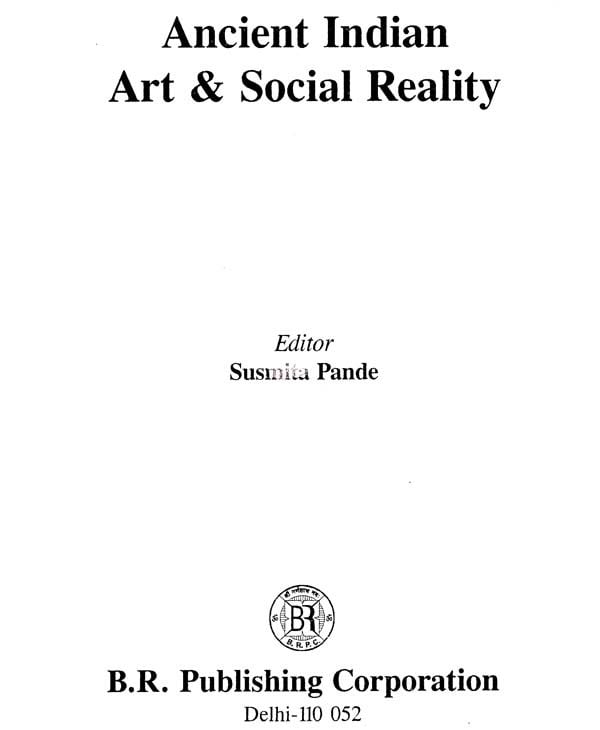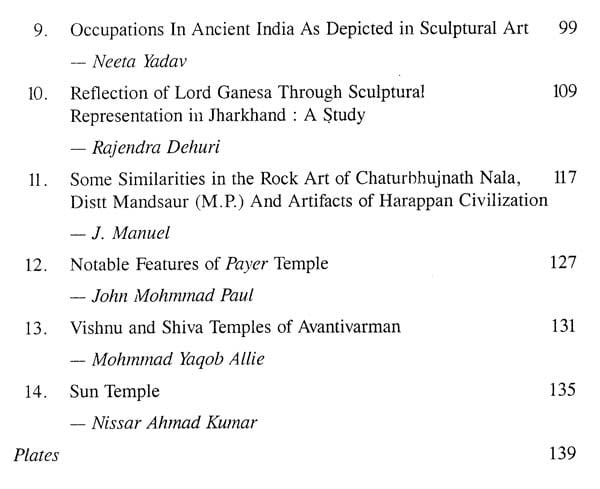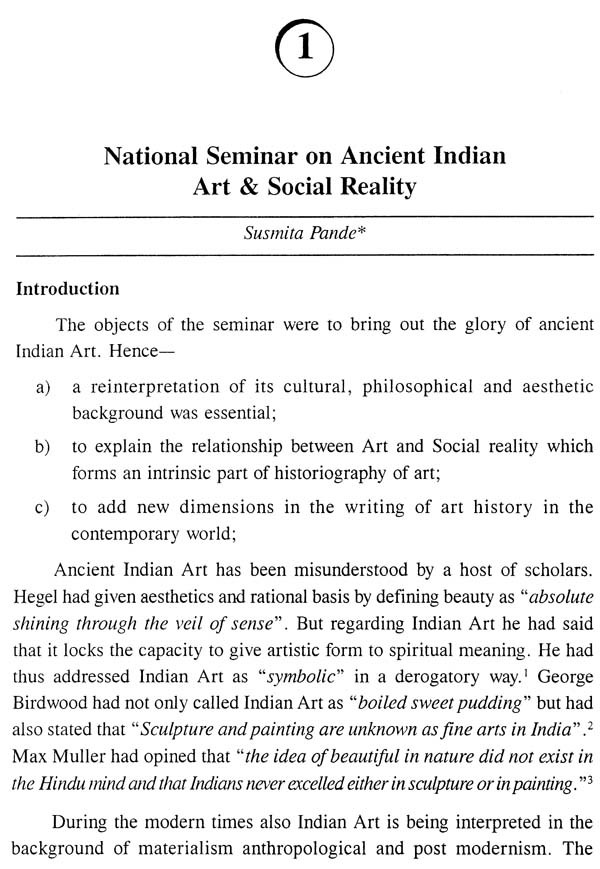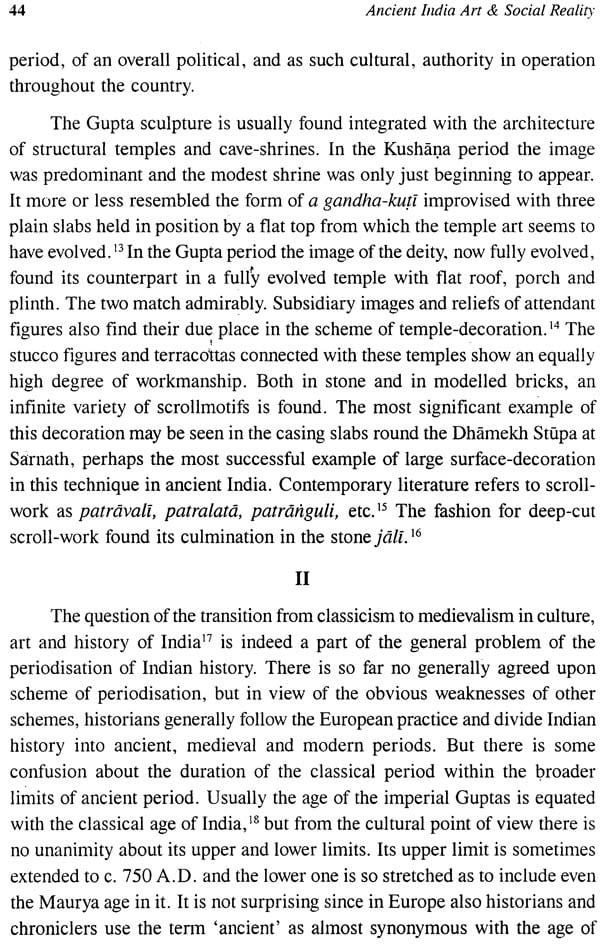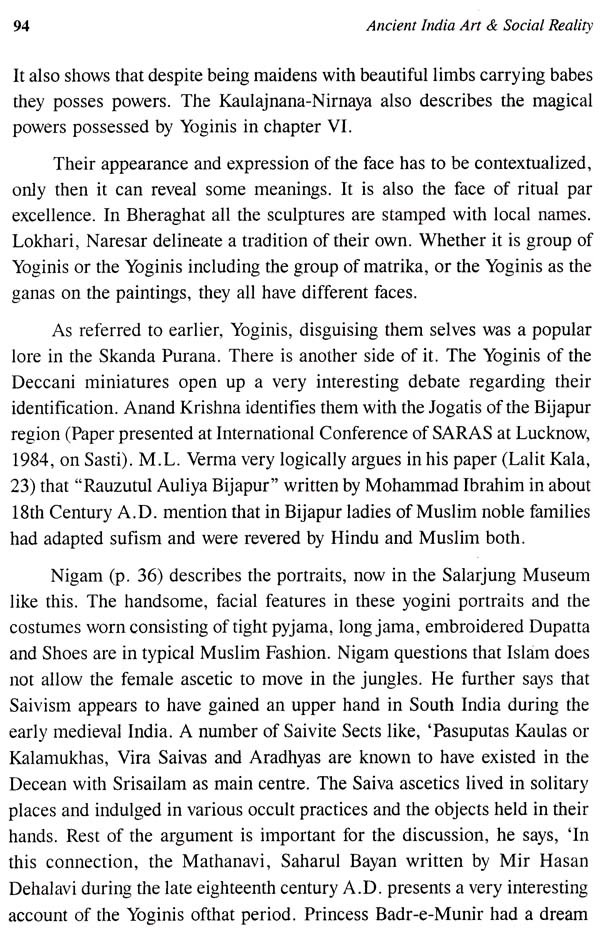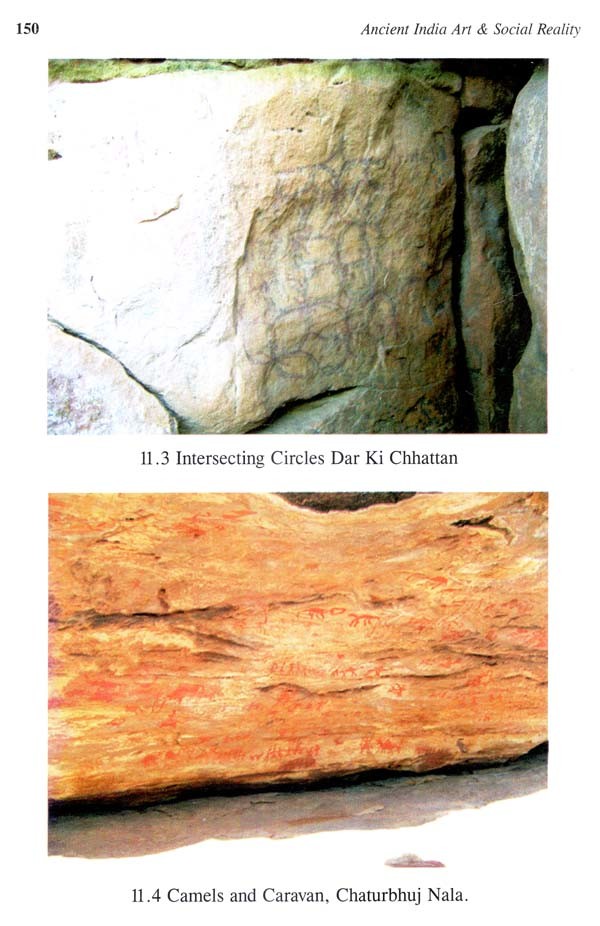
Ancient Indian Art & Social Reality
Book Specification
| Item Code: | AZE624 |
| Author: | Susmita Pande |
| Publisher: | B.R. PUBLISHING CORPORATION |
| Language: | ENGLISH |
| Edition: | 2015 |
| ISBN: | 9789350502174 |
| Pages: | 162 (Throughout Color and B/w Illustrations) |
| Cover: | HARDCOVER |
| Other Details | 10.50x7.00 |
| Weight | 470 gm |
Book Description
The articles include a variety of topics ranging from the meaning of art. secular and religious art, aspects of social life in art, folk art, prehistoric art, prominent dynastic and regional styles, philosophical perspective of art, historiography of art etc.
The volume would go a long way in opening up new dimensions of ancient Indian Art amidst both researchers and general readers.
Her important books include Bhakti. Doctrines Art & Culture as in Vaishnava Puranas (Raka Prakashan, Allahabad), Birth of Bhakti in Indian Religions & Art (Books & Books, New Delhi), Mediaeval Bhakti Movement (Kusumanjali Prakashan, Meerut), Samaj, Arthik Vyavastha Evam Dharma (M.P. Hindi Grantha Academy, Bhopal), Rajnaitik Itihas Aur Sansthayen (M.P. Hindi Grantha Academy, Bhopal) and Bhartiya Sanskriti (M.P. Hindi Grantha Academy). Forthcoming books include "Revisiting Bhakti" (under publication from B.R. Publishing Corporation, Delhi).
She has a number of research articles to her credit which include Articles on various aspects of History, History of Science, Art, Religion and Culture. She has made many Audio-Video Lectures and films on various aspects of Indian culture and heritage for M.P. Bhoj (Open) University, Bhopal.
She has been the Editor of many books. Among the important books edited by her are Ancient Indian Art, Paleography, Epigraphy and Numismatics, Pre and Proto History of India, India's Cultural relations with South East Asia and also of the research journal, Prachya Pratibha.
She was also associated with the research projects of U.G.C., I.C.H.R. and 1.I.A.S. Simla.
Dr. Pande is a member of many academic bodies such as member of Board of Studies of Atal Bihari Vajpeyi Hindi Vishvavidyalaya, Bhopal and also the member of executive committee of National Mission on Monuments and Antiquities. (ASI) in Madhya Pradesh and Dr. V.S. Wakankar Puratattva Shodh Sansthan, Bhopal. She has been the director of an excavation at Takarawada in M.P. where a reach chalcolithic site was unearthed.
This very attitude of man to reality is part of his social due.
In the same epoch man rates the natural forms of things and human behaviour as of primary importance. This produces a realistic or naturalistic art. On the other hand an emphasis on subjectivity encourages imagination, fantasy and idealism. This is the basis of romantic art. As Croce has said these are the two principle modes of art- classical and romantic. From another point of view the classical gets divided into formalistic and conventional art where as the realistic and naturalistic arts are treated independently.
The modern sociological point of view does not draw any radical distinctions between social reality and art, art being treated as a decorative and symbolic function within the social activities. Therefore art has to be understood in terms of social purpose and available technique.
The role of patrons and artisans of the expression of the social power or the celebrations of social occasion thus becomes a crucial factor in the formation & assessment of art.
Art in short is the social formation often inspired by political and religious ideas. This is best seen in the monumental art.
**Contents and Sample Pages**
